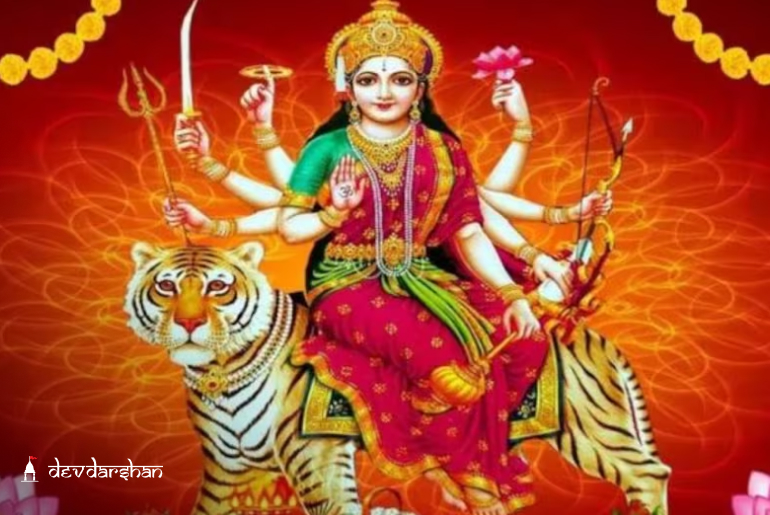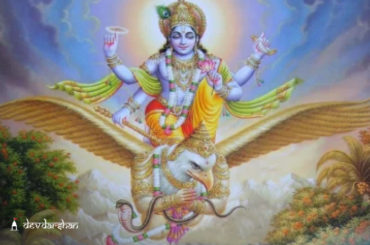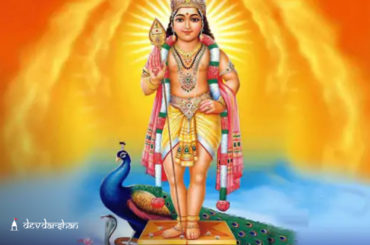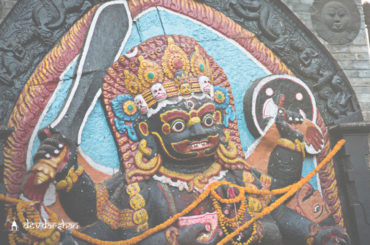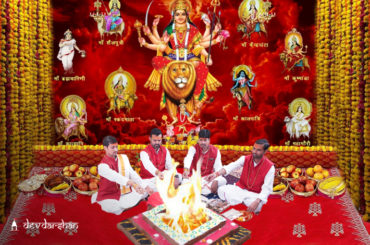Sharad Navratri or Sharadiya commences on the first day of the Ashwin month according to the Hindu calendar and culminates on the tenth day of the same month. This vibrant festival is a reverent celebration honouring Maa Durga and is widely recognised as Durga Puja, predominantly observed in the northern and eastern regions of India.
In Hindu mythology, Shri Rama venerated the divine Mother Goddess to wage a triumphant battle against the Demon King, Raavan, representing the victory of good over evil.
The tenth day, known as ‘VIJAYADASHAMI’ or ‘DUSSEHRA,’ holds special significance in this festival. Sharad Navratri aligns with the Ashwin month, signifying the onset of the winter season.
During Navratri, Devotees offer prayers to Maa Durga at home and visit temples dedicated to various manifestations of Mata Durga. The nine-day period is marked by the chanting of mantras, recitations of bhajans, and the recital of shlokas, all forming integral parts of Navratri rituals. Moreover, in Gujarat people celebrate Navratri with vibrant and colourable folk dance Garba, dancing their way to the nine days of Navratri.
Sharad Navratri: Dates and Puja
Navratri is said to occur four times a year in Hindu scriptures such as the Shakta and Vaishnava Puranas. By the way, Navratri occurs in the light half of the Hindu calendar months in all cases. However, the celebrations vary in different regions according to their cultural preferences.
The most well-known of the four Navaratris is Sharadiya Navratri, named after Sharada, which means autumn. It falls in the month of Ashwin (September–October, post-monsoon) of the Hindu calendar. The festival occurs after the autumn harvest in certain areas and during the harvest in other regions of India.
Sharada Navaratri is a post-monsoon autumn festival dedicated to the divine feminine Devi – Maa Durga. The festivity is celebrated throughout Pan India and now it is spread around the world. Let’s find dates and which goddesses are worshipped during the nine days of Navratri.
1st Day of Navratri (Paratipada)
Also known as: Ghatasthapana, Chandra Darshan
Puja: Shailputri Puja
Day: Sunday
Date: October 15, 2023
2nd Day of Navratri (Dwitiya)
Also known as Sindhara Dooj
Puja: Brahmacharini Puja
Day: Monday
Date: October 16, 2023
3rd Day of Navratri (Tritiya)
Also known as: Gauri Puja, Saubhagya Teej
Puja: Chandraghanta Puja
Day: Tuesday
Date: October 17, 2023
4th Day of Navratri (Chaturthi)
Also known as Vinayaka Chaturthi, Lakshmi Panchami
Puja: Kushmanda Puja
Day: Wednesday
Date:18 October 2023
5th day of Navratri (Panchami)
Also known as: Skanda Sashti
Puja: Naag Puja, Skandamata Puja,
Day: Thursday
Date: October 19, 2023
6th Day of Navratri (Shasthi)
Also known as: Yamuna Chhath
Puja: Katyayani Puja
Day: Friday
Date: October 20, 2023
7th Day of Navratri (Saptami)
Also known as: Maha Saptami
Puja: Kalaratri Puja
Day: Saturday
Date: October 21, 2023
8th Day of Navratri (Ashtami)
Also known as: Durga Ashtami, Annapurna Ashtami
Puja: Mahagauri Puja, Sandhi Puja
Day: Sunday
Date: October 22, 2023
9th Day of Navratri (Maha Navami)
Also known as: Navratri Parana,
Puja:Siddhidatri Puja
Day: Monday
Date: October 23, 2023
Last Day of Navratri (Vijaya Dashami)
Also known as: Dussehra, Durga Visarjan
Day: Tuesday
Date: October 24, 2023
Significance of Sharad Navratri 2023
The significance of Sharad Navratri lies in its religious, cultural, and spiritual importance. Let’s find the significance of Sharad Navratri in varied aspects.
- Worship of the Goddess: Sharad Navratri is a time when devotees worship the divine feminine energy, primarily in the forms of Durga, Lakshmi, and Saraswati. Each day of Navratri is dedicated to a different form or manifestation of the goddess. Devotees seek her blessings for strength, prosperity, and wisdom.
- Victory of Good over Evil: The festival commemorates the victory of Goddess Durga over the demon Mahishasura after a nine-day battle. This symbolises the triumph of good over evil, and it serves as a reminder of the importance of righteousness and virtue in one’s life.
- Fasting and Penance: Many people observe fasts during Navratri, abstaining from certain foods and practising self-discipline. Fasting is seen as a way to purify the body and mind and to focus on spiritual practices. It is believed that fasting and prayers during Navratri can bring one closer to the divine.
- Cultural Celebrations: Navratri is not only a religious festival but also a cultural extravaganza. In many parts of India, people celebrate with dance forms like Garba and Dandiya, wearing traditional attire, and participating in community gatherings. These cultural celebrations foster a sense of unity and togetherness among people.
- Seasonal Significance: Sharad Navratri typically falls during the transition from monsoon to autumn in India. It is a time when the weather becomes more pleasant, and nature is in full bloom. This season change adds to the festive atmosphere and the sense of renewal and rejuvenation associated with the festival.
- Durga Puja: In some regions of India, particularly in West Bengal, Sharad Navratri is celebrated as Durga Puja with great grandeur and enthusiasm. Elaborate idols of Goddess Durga are created and worshipped, and the festival is marked by processions, cultural performances, and art installations.
- Spiritual Reflection: Sharad Navratri is a time for spiritual introspection and growth. Devotees engage in prayers, meditation, and reading of religious texts. It is an opportunity to strengthen one’s faith and connection with the divine.
Sharad Navratri is a time for devotion, celebration, and self-reflection, and it plays an important role in the lives of millions of Hindus and people from other communities who join in the festivities.
Sharad Navaratri 2023 Celebrations
Worshipping nine goddesses during Navratri, stage decorations, recital of the legend, live dramas and enactment of the plot, and chanting Hindu scriptures are all part of the festivities. The nine days also serve as a significant crop harvesting season followed by cultural events, competitions for pandal design, and stage decoration, especially in West Bengal. People love to visit these pandals, and they perform puja each day till Dashmi.
Apart from pandal hopping, people enjoy various activities, including classical songs and folk dances. The statues are submerged in a water body, like a river or ocean, on the final day, known as Vijayadashami or Dussehra. The statue symbolising evil is burned with fireworks and it symbolised death. The festival also kicks off the countdown to one of the most popular and commonly observed holidays, Diwali, or the festival of lights, which falls twenty days after Sharad Navratri.

